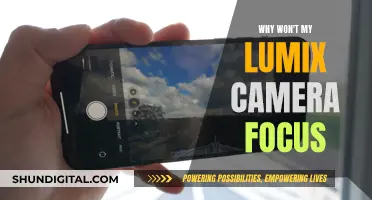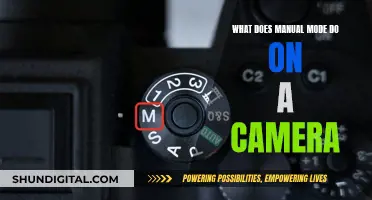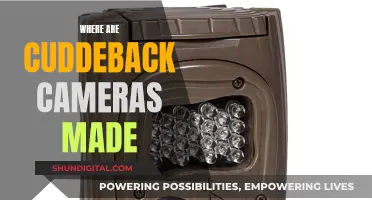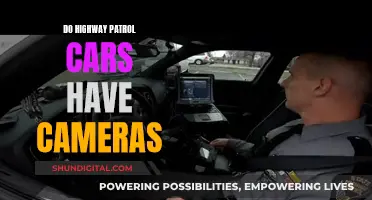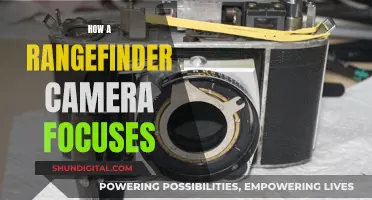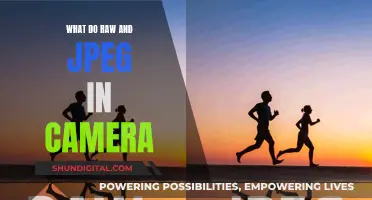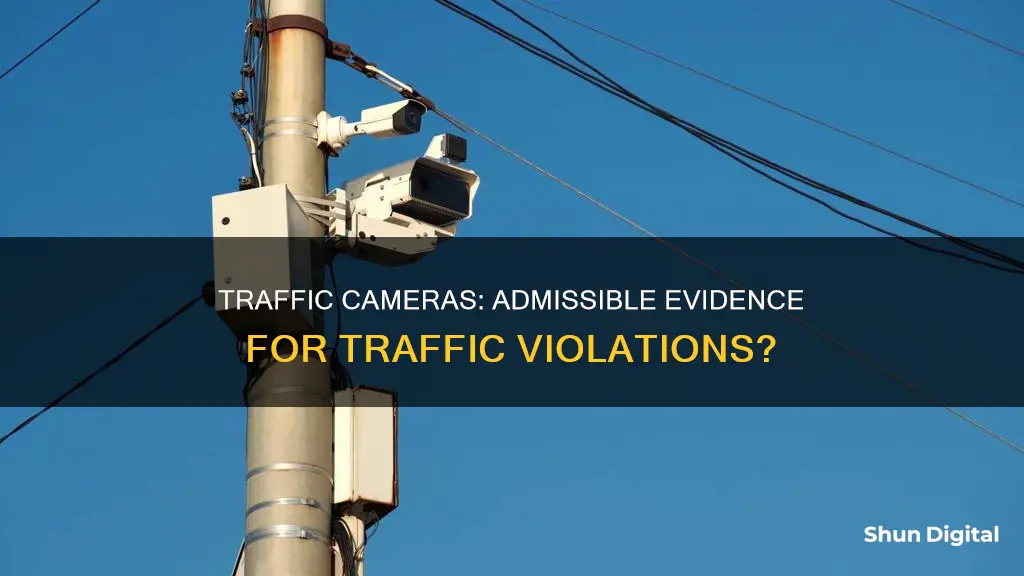
Traffic cameras are used to monitor and enforce compliance with road rules and improve road safety. They are typically mounted beside or over a road or installed in an enforcement vehicle. While they are effective in reducing crashes, their use is highly controversial, with questions raised about public safety, privacy, and drivers' rights. The admissibility of traffic camera evidence varies across different jurisdictions. For example, in some US states, pictures from red light camera systems are ruled inadmissible in court, while in others, such as California, cameras are set up to capture the driver's face to identify the actual violator. Understanding the specific laws in your state or jurisdiction is crucial to determine the admissibility of traffic camera evidence.
| Characteristics | Values |
|---|---|
| Purpose | To deter violations and make intersections safer by monitoring and enforcing compliance with traffic signals and speed limits. |
| Detection | Speeding, red-light running, toll booth evasion, unauthorized use of bus lanes, congestion charge area violations, etc. |
| Location | Mounted beside or over a road or installed in an enforcement vehicle. |
| Legality | Varies by state; at least 10 states, including Mississippi, have outlawed their use. |
| Evidence | Images or videos of license plates and/or drivers. |
| Notification | Mailed tickets or fines, often including administrative costs. |
| Payment | Fines must be paid, or the matter may be sent to a collection agency, affecting credit scores. |
| Contestation | Possible to contest on procedural grounds, system illegality, or by proving another driver was responsible. |
| Record | Treated like parking tickets in some states, while others handle them as moving violations. |
What You'll Learn

Privacy and public safety concerns
Traffic cameras are a highly controversial topic, with many states and cities adopting their use, while others have banned them. They are a relatively new law enforcement tool, and as such, there are concerns about their impact on privacy and public safety.
Privacy Concerns
The American Civil Liberties Union (ACLU) has raised concerns about the use of traffic cameras, particularly regarding privacy and due process. One of the main issues is that the tickets are sent to the owner of the vehicle, who may not have been the person driving at the time of the alleged violation. This shifts the burden of proof onto the owner to prove their innocence, which goes against the American principle of innocent until proven guilty.
There are also worries about "mission creep", where the data collected by these cameras will be used for purposes beyond their original intent, such as tracking the movements of vehicle owners. This is a legitimate concern, as similar systems have already been used to invade privacy, such as capturing the license plates of law-abiding citizens crossing state borders.
Public Safety Concerns
The use of traffic cameras has also raised questions about public safety. While the cameras are intended to improve road safety by deterring violations, there is some debate about their effectiveness in achieving this goal. Some argue that the cameras can actually lead to an increase in accidents, as drivers may suddenly brake to avoid a ticket, causing rear-end collisions.
Additionally, the placement of these cameras has been questioned. There have been allegations that the choice of intersections and the timing of yellow lights may be influenced more by a desire to maximize ticket revenue than by concerns for traffic safety.
Furthermore, the use of traffic cameras can impact public trust in law enforcement and government agencies. The public may become cynical and suspicious if they believe that contractors are "gaming the system" to increase revenue, rather than genuinely improving road safety.
Balancing Privacy and Public Safety
While traffic cameras do raise valid privacy and public safety concerns, it's important to recognize that they can also have benefits. Cameras in public places can help deter and catch street criminals, and in some cases, they can even reduce the risk of government abuse by providing evidence of police misconduct.
The key lies in finding the right balance and putting control mechanisms in place to ensure that the benefits of increased surveillance outweigh the risks to privacy and public safety.
Sabotaging Surveillance Cameras: Effective Ways to Try
You may want to see also

Limitations on camera placement
The placement of traffic cameras is a highly controversial issue, with questions raised about public safety, privacy, and drivers' rights. While some states have banned automated traffic cameras, others have imposed limitations on their use. These limitations vary from state to state and can include restrictions on where cameras can be placed and how they are used by law enforcement.
For example, in Washington state, the use of automated traffic safety cameras is restricted to specific locations, including intersections with traffic signals, railroad crossings, and school speed zones. The local legislative authority must also prepare an analysis of the proposed camera locations, and signage must be posted to clearly mark the presence of these cameras. Additionally, the cameras may only capture images of the vehicle and license plate, and the pictures must not reveal the faces of the driver or passengers.
In Seattle, the use of cameras is focused on enforcing school zone speed limits, red-light violations, and infractions in high-occupancy vehicle lanes and bus lanes. Similarly, Providence in Rhode Island has implemented school-zone speed cameras, which have raised revenue beyond initial projections, leading to concerns about the role of private companies in traffic enforcement and the potential erosion of civil liberties.
The limitations on camera placement and usage vary across different states and even cities, reflecting the ongoing debate surrounding the use of traffic cameras for enforcement.
Latest Camera Raw 11 Features Explained
You may want to see also

Warning signs for drivers
Warning signs are important for drivers to be aware of potential dangers or changes in road conditions ahead. These signs are usually yellow or orange with black symbols, and often diamond-shaped or rectangular.
- Traffic Signal Ahead: This sign warns drivers of an upcoming traffic signal or intersection. It indicates the need to prepare to stop if the traffic light is red or yellow.
- Speed Limit Ahead: This sign alerts drivers to a reduced speed zone ahead. It is typically accompanied by the new speed limit, such as 45 mph.
- Camera Warning Signs: In some states, warning signs are placed before speed or red-light cameras to inform drivers of the upcoming enforcement. These signs may be on the camera vehicle itself or posted before and after the camera location.
- Road Signs Related to Traffic Camera Enforcement: In addition to camera warning signs, be mindful of signs indicating common traffic violations that may be captured by cameras, such as "Stop Ahead," "Yield Ahead," or signs related to lane changes and merges.
- State-Specific Camera Laws: Each state has its own traffic laws regarding camera usage. Familiarize yourself with the laws in your state and areas you drive through. Some states ban automated traffic cameras, while others allow local governments to set up camera programs.
- Camera Locations: Keep an eye out for common camera locations, such as intersections, school zones, toll booths, bus lanes, and congestion charge areas.
- Camera Appearance: Traffic cameras can be challenging to spot and may resemble red light or speed cameras. They are often dome or cylinder-shaped, enclosed in weatherproof coverings, and placed on top of traffic signals or light poles.
- Camera Detection: Modern vehicles with GPS navigation systems can alert drivers of known camera locations. Additionally, some camera systems use sensors or automatic number-plate recognition technology to detect vehicles' speed and license plates.
- Camera Enforcement: Traffic cameras are used to enforce traffic laws, including speeding, running red lights, unauthorized use of bus lanes, or toll evasion. Violations captured by cameras can result in fines and, in some states, affect your credit score if left unpaid.
- Contest a Ticket: If you receive a traffic camera ticket, you have the right to contest it. Review the instructions on the ticket and seek legal advice if needed. Challenging tickets on procedural grounds or providing evidence of another driver may lead to a successful dispute.
Unlocking Camera Mode in Anno 1800: A Guide
You may want to see also

Admissibility of camera evidence
The admissibility of camera evidence varies across different states and countries. In the US, some states have outlawed the use of traffic cameras, including Mississippi, while others allow their use for enforcing traffic laws. In states that permit the use of traffic cameras, the evidence they capture can be used to charge drivers with violations and issue fines. However, the use of this evidence may depend on certain conditions being met, such as proper signage and warnings.
In the UK, speed cameras must pass Home Office Type Approval (HOTA) for the evidence they capture to be admissible in court without the need for a witness. HOTA involves rigorous testing and certification by the Home Office, ensuring that the cameras meet international accuracy standards and do not falsely accuse non-violating vehicles.
In some cases, the admissibility of camera evidence has been challenged in court. For example, pictures from San Diego's red light camera systems were ruled inadmissible due to a "total lack of oversight" and the way in which contractors were compensated based on the number of tickets issued. Similarly, in Baltimore, speed cameras were found to be producing erroneous readings, leading to erroneous citations.
To ensure the admissibility of camera evidence, it is important for jurisdictions to have clear regulations and oversight mechanisms in place. Proper calibration, testing, and maintenance of the cameras are also crucial to ensure accuracy and reliability. Additionally, the use of camera evidence should be balanced with considerations for privacy and drivers' rights.
Overall, while the admissibility of camera evidence for traffic violations varies depending on the specific jurisdiction, it is generally permissible in many places under certain conditions. However, there are ongoing debates and legal challenges surrounding the use of this technology.
Understanding RAW Camera Files: Unlocking Photography's Potential
You may want to see also

Revenue from traffic cameras
Traffic cameras are a significant source of revenue for state governments. In New South Wales, for instance, traffic cameras generated $150 million in revenue for the state government in the 2013-14 financial year. Motorists in the state paid $408,000 a day in fines from speed and red-light cameras during that period.
The revenue generated by traffic cameras has led to accusations of "revenue-raising" against state governments. In New South Wales, the state opposition claimed that the government had built its state budget on collecting fines, as it had collected almost twice the amount of revenue from road cameras than the previous Labor government.
In the US, the use of traffic cameras for revenue collection has been a controversial issue. While some states allow the use of traffic cameras for enforcing traffic laws, several states have banned their use. There are concerns that the use of automated enforcement through cameras raises questions about public safety, privacy, and drivers' rights.
Some states have restricted the use of revenue generated by traffic cameras. For example, Washington State restricts the use of revenue from traffic cameras to certain traffic safety purposes. Iowa has a similar law that restricts the use of traffic camera revenue to funding infrastructure improvement projects and police and fire department operating costs.
The effectiveness of traffic cameras in reducing accidents and improving road safety has been debated. While some studies have shown that speed cameras lead to a reduction in crashes and injuries, others have questioned the effectiveness of cameras in improving road safety. There are also concerns about the potential for governments to use traffic cameras for mass surveillance of vehicle movements and the loss of privacy for drivers.
Choosing the Right Wire for Your Surveillance Camera Setup
You may want to see also
Frequently asked questions
The use of traffic cameras varies depending on the state and local laws. While some states allow the use of traffic cameras for enforcing traffic laws, others have banned their use.
Red light traffic cameras are usually triggered when a vehicle enters an intersection after the light has turned red. The camera captures an image of the license plate, and a ticket is then mailed to the vehicle's registered owner.
Yes, it is possible to contest a traffic camera ticket. You can check if the photo captured by the camera is of your vehicle and if there are any procedural grounds for challenging the ticket.
If you do not pay a traffic camera ticket, it may be turned over to a collection agency, which could affect your credit score. In some states, unpaid tickets may also result in a hold on your vehicle registration.
The retention period for traffic camera footage varies depending on the location. In some areas, the footage may be deleted or recorded over within 24 to 72 hours, while in others it may be retained for longer periods.


